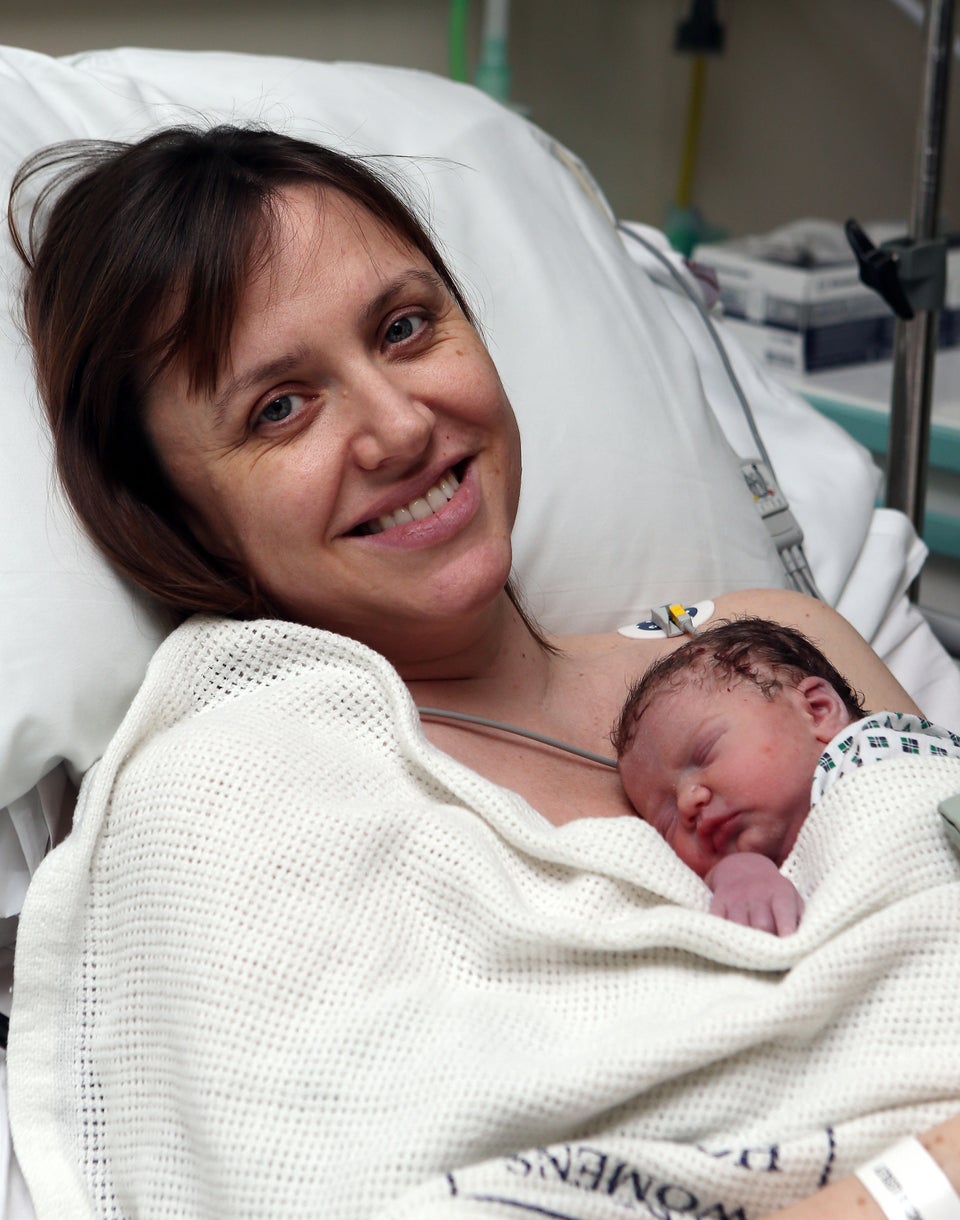
This one small baby girl represents a giant step forward for proponents of a new IVF embryo selection technique.
British clinical psychologist Ruth Carter is the first woman to have a baby conceived through the Early Embryo Viability Assessment (Eeva) Test; her daughter was born by C-section last Friday at the Liverpool Women's Hospital in the U.K.
The infant, whose birth her parents called a "miracle," weighed 5 lbs 15 oz and is her 42-year-old mother's second child with partner John Traverse; the couple's first child, a toddler son, was also conceived via IVF.
Hannah Marsden, a senior embryologist at the hospital, explained the Eeva process in a video interview with Bay TV Liverpool:
The system takes pictures of each embryo about every five minutes, and then intelligent software within the system can analyze the embryos based on those videos ... to help us predict whether an embryo is gonna carry on with development. So it doesn't predict which embryos [will] create a baby, but it does help us choose which embryos to transfer.
In Carter's case, Marsden said, the system identified which single embryo out of five possible embryos had "the best chance of development." She also noted that the hospital would be "fully time-lapse" as of the following week.
"To watch our hard work in research and innovation result in a real life healthy baby is the main reason we do what we do and it is why we work so hard to make people’s dreams of a family become a reality," Dr. Leanne Bricker, who delivered the baby, told the Liverpool Echo.
The Echo also reports that another Eeva baby will likely be born in Scotland this week; that baby was actually originally expected to be the first ever Eeva baby (Ruth Carter's baby was almost a month early).
According to a press release from Auxogyn, the company that produces Eeva, the test was available at six European clinics as of May 7. Liverpool Women's Hospital's Hewitt Fertility Center was the first of those clinics, according to a hospital press release published at the end of February. At the time, the center's lead consultant, Professor Charles Kingsland, called Eeva "the biggest breakthrough in IVF in the last 10 years" and said it allowed doctors to predict an embryo's chance of success with 85 percent accuracy.
The test's website further explains:
Eeva consists of a special microscope that fits inside a standard incubator and takes video images of your embryos, which are analysed by proprietary, intelligent software. Your embryos are cultured within a specially-designed Eeva dish while Eeva watches over your embryos through Day 3 or Day 5, depending upon the advice of your IVF team.
As The Telegraph points out, the Eeva technique is similar but not identical to another new embryo selection method, based on thousands of time-lapse photos and "morphokinetic algorithms to predict success" or MAPS, that made headlines in May. The researchers who developed MAPS suggested when their findings were published that they could triple national live birth rates in Britain using the technique, which, like Eeva, allows for much closer monitoring of embryos than traditional microscope-based examinations.
